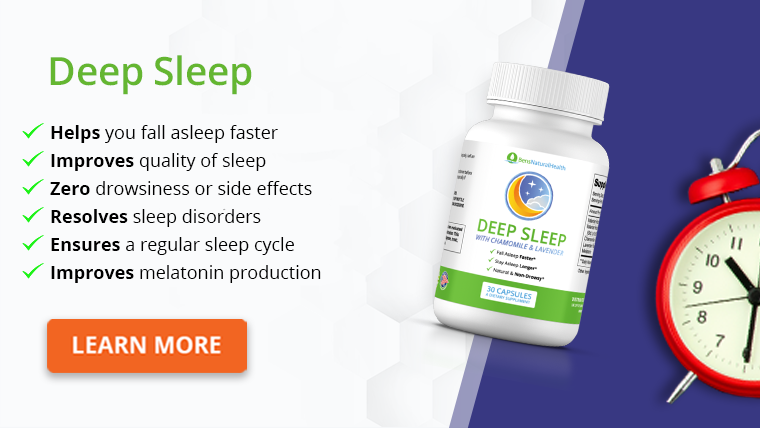- What is Minoxidil (Rogaine)?
- How does Minoxidil work?
- What happens if a woman uses Minoxidil?
- Can women use Minoxidil?
- Uses of Minoxidil in Women
- Which brand of minoxidil is best for women?
- What is the success rate of minoxidil in women?
- How to use minoxidil
- How long does it take Minoxidil to work?
- Side effects of Minoxidil
- Warnings and precautions
- Who should not use minoxidil?
- Conclusion
- Source
Without a doubt, healthy hair is a thing of beauty.
For many, having a head full of gorgeous hair is a source of confidence and is an essential part of body image.
This is especially true when it comes to women, who often see hair as one of the pillars of their femininity.
It is no surprise, then, that unwanted hair loss, a condition medically known as alopecia, can be debilitating and can seriously affect a woman’s emotional well-being and quality of life.
Fortunately, there are several remedies – both natural and synthetic – that have been shown to help combat hair loss.
Minoxidil is one that has gained immense popularity since it was first discovered decades ago.
However, for a long time, the focus has been on using minoxidil for men.
Does minoxidil work for women too? That is a question we’ll answer in this article.
Read on to find out everything you need to know about how minoxidil works in women, its uses, side effects, and much more.
What is Minoxidil (Rogaine)?
Minoxidil, also known by the brand name Rogaine, is a drug that has been used to treat hair loss for decades.
First discovered in the 1970s, minoxidil was initially used to treat refractory high blood pressure, which is when blood pressure is unresponsive to first-line antihypertensive drugs.
It was observed that balding patients who took the oral form of minoxidil to treat hypertension saw their hair growing back on their scalps and other parts of their bodies.
This is what led to the formation of a mixture that could be applied directly on the skin in an attempt to treat alopecia.
Since then, topical minoxidil has become widely available in the market. It has become well known for its use as a remedy for male pattern hair loss.
But, as we’ll highlight in this article, minoxidil works just as well for treating female pattern hair loss.
How does Minoxidil work?
The mechanism of action of minoxidil in stimulating hair growth is not fully understood. The drug acts on potassium channels found on the smooth muscles of blood vessels and leads to vasodilation or relaxation of the blood vessels.
It is believed that when this happens around the scalp and hair follicles, there is an increase in nutrient and blood flow which encourages hair growth.
Minoxidil may also help prevent hair loss and thinning. Hair growth occurs in three stages – the growth phase, the transition phase, and the resting phase.
During the growth phase, hair undergoes active growth that can last an average of two to seven years. How long your hair growth phase lasts depends on your health status, age, and the length of your hair.
After the growth stage, your hair cuts itself from its blood supply and stops growing. This brings it to a short transition phase which lasts for only a few weeks.
Finally, the hair enters the resting phase, lasting for two to three months. After this, the hair sheds off, and a new hair cycle begins.
How minoxidil prevents hair thinning is not completely understood, but it is thought to shorten the resting phase and lengthen the growth phase of hair growth.

What happens if a woman uses Minoxidil?
Since both men and women have potassium channels on the smooth muscle cells of their blood vessels, minoxidil works the same way for women as it does for men.
As explained above, its blood vessel dilating effect causes an increase in nutrient and oxygen delivery, leading to accelerated hair growth and fuller hair.
Can women use Minoxidil?
Despite balding being more common in men, women also suffer from female pattern hair loss (FPHL), which can start as early as 20 years of age in some women.
However, FPHL is much more common among older women. It is estimated that more than 50% of women will have some amount of hair loss by the age of 80.
While the exact cause of FPHL is not yet known, various factors are thought to contribute to this condition. The main ones are hormonal changes and genetic factors. This is why FPHL is also known as androgenetic alopecia.
Normally, women lose 50-100 hairs a day. In contrast, women with androgenetic alopecia lose around 150 hairs every day.
FPHL is typically a progressive condition that may worsen if left untreated. Fortunately, minoxidil is one of the most effective methods for treating this condition.
In the beginning, minoxidil was used for only male hair loss, but it is now approved by the FDA for treating female hair loss.
It is also the most recommended drug by the American Academy of Dermatology for the treatment of female pattern hair loss and has been shown in studies to increase hair volume after about just six months of consistent use.
It is important to note that minoxidil is only recommended for treating FPHL and not for other causes of hair loss in women. For instance, if your hair loss is due to a medical condition, minoxidil may not make much of a difference.
Uses of Minoxidil in Women
Oral minoxidil was at first used to treat patients who were not responding to other medications used to treat hypertension. It is still in use as a hypertensive drug for people whose blood pressures are difficult to control.
Minoxidil is now used off-label to treat both male pattern baldness and female pattern baldness. The topical form is sometimes also used to treat hair loss caused by chemotherapy.
Which brand of minoxidil is best for women?
Minoxidil comes in various preparations. While oral minoxidil is also used for treating hair loss in women, we’ll focus on topical minoxidil in this article.
There is a minoxidil 2% topical solution, a 5% minoxidil topical solution, and a minoxidil 5% topical foam.
Back in the day, only the 2% minoxidil topical solution was recommended for women. This weaker solution was reserved for women because there is a risk of the product dripping from the scalp and onto the rest of the face to cause unwanted hair growth.
With the stronger 5% solution, the risk of this is higher, which is why it is not recommended for women to use it.
In 2014, the FDA approved the use of 5% minoxidil foam for treating female pattern hair loss (FPHL). The reason is that, with the foam version, there is a lower risk of the drug dripping down onto the rest of the face.
This means that women have two recommended options – the 2% minoxidil solution and the 5% minoxidil foam.
So, which is better? The answer is, it depends on you. Both formulations have been proven to help treat hair loss. However, each has its advantages and disadvantages.
One study comparing both formulations found that when women used the 5% Minoxidil foam just once a day, it was just as effective as using the 2% minoxidil solution twice a day.
Also, the foam appeared to be easier and more practical to use. Many women reported that it did not interfere with styling their hair.
The drawback of the 5% formulation is the increased risk of the high-strength solution causing facial hair growth when it drips down.
You’ll need to take extra care to prevent the foam from touching the rest of your face. You can also wash your face after applying it.
If doing this sounds too bothersome, the 2% may be a better option for you.
What is the success rate of minoxidil in women?
The success rate of using minoxidil is high, and the drug has been clinically proven to be effective at fighting hair loss.
In one study, women applied a 2% solution of minoxidil daily for 32 weeks. At the end of the study, more than half of the group using the minoxidil solution experienced new hair growth.
Minoxidil needs to be used every day for an extended period for you to see results. If used consistently and as directed, you should see regrowth of your hair within three to four months of usage.
Hair loss is common within the first two to three weeks of using minoxidil. Do not panic. This is a normal effect of the treatment.
The old, damaged hair is shed to give room for new, healthy hair to grow.
It is important to note that you need to continue using minoxidil every day to reap its benefits for hair loss. Once you stop using it, the effect will be lost, and your hair will start thinning once again.

How to use minoxidil
The two recommended formulations for women are different in concentration and, thus, have different dosages.
For the minoxidil 2% topical solution, you should apply 1 ml twice daily. If you’re using the minoxidil 5% topical foam, on the other hand, apply half of the cap only once a day.
Regardless of your hair texture and whether it is natural, permed, colored, or relaxed, you can use minoxidil, provided that your scalp is not inflamed or irritated.
Here are a few things to keep in mind:
- Topical minoxidil should be applied directly to your scalp and not to your hair. Apply the product to your scalp thoroughly using your fingers.
- Wash your hands immediately after you are done to avoid applying the solution to unwanted areas.
- It is preferable to apply minoxidil at least two to three hours before going to bed to give your hair time to dry completely. This helps to prevent the drug from spreading and staining your clothes or bed linen while you are asleep.
- It takes about an hour for at least 50% of minoxidil to be absorbed into your scalp and about four hours for 75% of it to be absorbed. So, allow the medication to sit on your scalp for at least 4 hours before rinsing or swimming to give it time to start working before rinsing it off.
- Remember that you have to use minoxidil daily and consistently to maintain results. Once you stop the treatment, alopecia will return within a few months at the same rate the hair was lost before using the minoxidil.
- Do not take a double dose of minoxidil to make up for a missed dose. Just continue with your next dose.
How long does it take Minoxidil to work?
Minoxidil takes a while to start working. That is about eight weeks after starting its use. However, you may not notice any results until about four to six months of continued use.
This is when the drug has its maximum effects. So do not expect to see any changes immediately after you start using it.
Side effects of Minoxidil
Generally, minoxidil is a safe drug to use on a long-term basis, but as with any other medication, side effects can occur.
The most common side effects include:
- Irritation on the scalp
- Scalp itching and dryness
- Scaling
- Increase in the amount of hair shedding
- Excessive growth of hair on other parts of the body, such as the face
- Change in hair color or texture
- Chest pain
- Rapid heartbeat
- Dizziness
- Swelling of the hands and feet
- Unexplained sudden weight gain
Warnings and precautions
If you notice any of the above signs, stop using minoxidil and contact your healthcare provider.
Also, inform your healthcare practitioner if you are allergic to the product or any other medications.
The drug may come in preparations mixed with other compounds (inactive ingredients) that may also cause allergies.
Minoxidil may cause serious birth defects when taken by pregnant women. If you are using minoxidil, be sure to take precautions to avoid pregnancy. And, if you are actively trying to get pregnant or have a positive pregnancy test, stop using the medication.
You should also avoid minoxidil if you are breastfeeding, as the drug can be excreted in breast milk. It can end up in your baby’s system and may cause hypertrichosis.
Who should not use minoxidil?
It is not recommended to use minoxidil if:
- You have hypertension. Visit your doctor if you have high blood pressure.
- You’re less than 18 years or older than 65 years.
- You previously had a bad reaction to minoxidil (itching, redness, dizziness, etc.).
- You have sudden or patchy hair loss (i.e., your hair has not been progressively falling off as is usual with FPHL).
- You’re on treatment for a scalp condition.
- You have a skin condition affecting your scalp, like sunburn, eczema, and psoriasis.
- You are pregnant or breastfeeding.

Conclusion
Minoxidil has been used for decades as a treatment for hair loss. It is thought that the drug works by increasing blood flow to hair follicles and by prolonging the growth phase of the hair growth cycle.
While it was initially used only for men, it has been found to be an effective treatment for both male and female pattern hair loss.
So if you are a woman suffering from FPHL, minoxidil might just be what you need to revive your beautiful mane. However, if you suffer from other causes of hair loss, you should seek other treatment options.
Also, remember that you need to be consistent to see results when using this drug. Hair that you have regrown with the use of minoxidil will be lost once you stop using the medication.
Explore More







